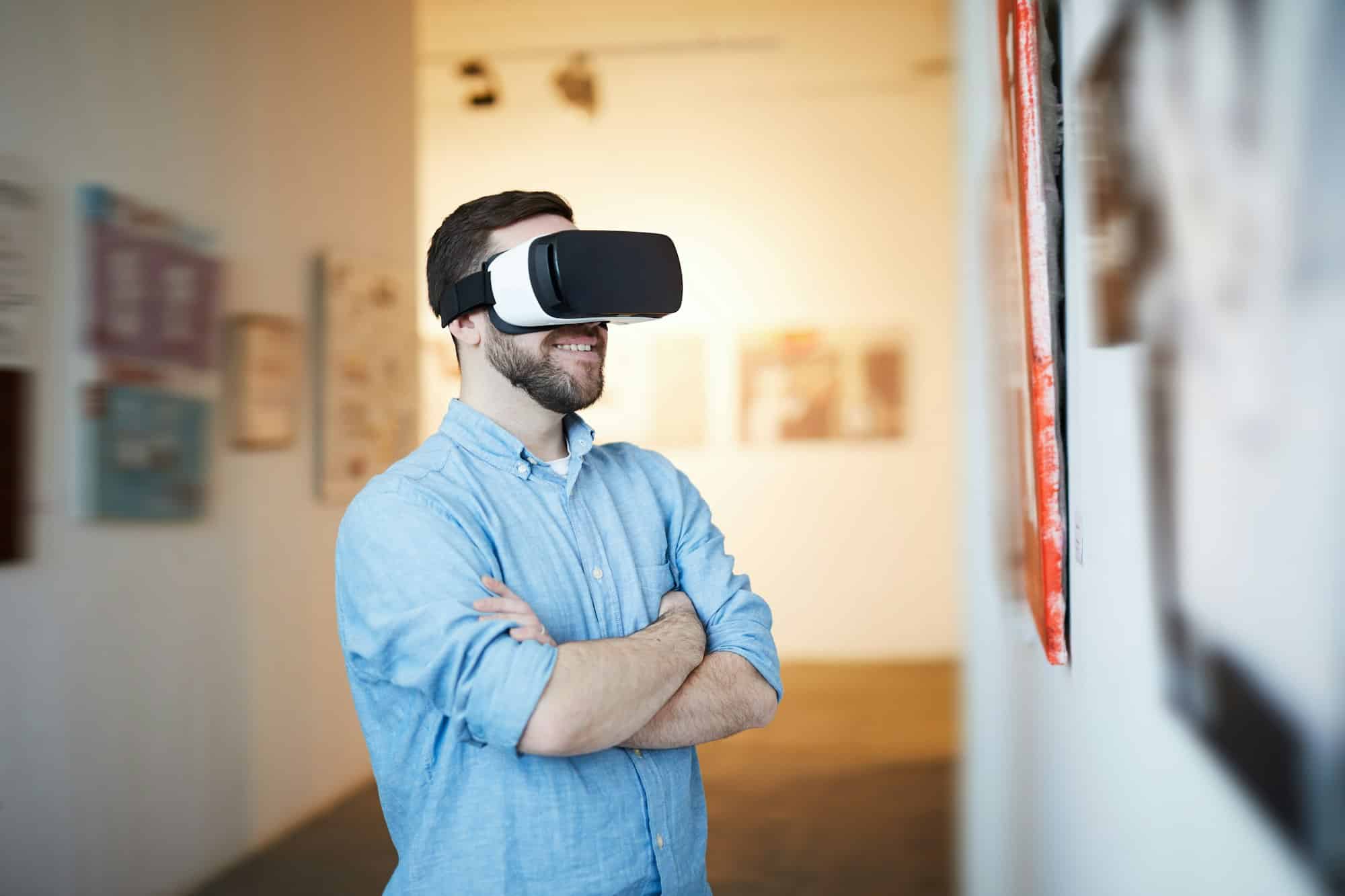What Are the Advances in VR for Interactive UK Museum Exhibits?

As technology evolves, it continues to reshape how we interact with the world. One significant beneficiary of this technological revolution is the museum sector. Various museums have adopted cutting-edge technologies to enhance visitors’ experiences and broaden their reach. Notably, Virtual Reality (VR) emerges as a groundbreaking tool in this respect, revolutionizing how we engage with art, history, and culture. This article delves into the advances in VR technology, how it creates immersive, interactive experiences in UK museums and how it promises to redefine the future of museum visits.
The Intersection of VR and Museum Experiences
Before we dive deep into the intricacies of how VR is transforming UK museums, it is essential to understand the interconnection between these two elements. Virtual Reality, a technology that creates a computer-generated simulation of an environment, is proving to be a game-changer in the museum sector. It provides a platform for visitors to engage with exhibits in ways they could never have imagined, transforming the traditional museum-going experience into an immersive, interactive adventure.
Lire également : How Can AI Content Curation Tools Enhance Educational Resources for UK Teachers?
Utilizing VR, museums in the UK have designed exhibitions that allow visitors to explore different times, places, and civilizations, all from the comfort of their location. By donning VR headsets, visitors can take a stroll through ancient Rome, wander around a prehistoric jungle, or even walk on the moon.
How VR Creates Immersive Experiences in Museums
Now, let’s explore how VR creates immersive experiences in museums. The primary goal of any museum is to educate and inspire its visitors. However, static exhibits and placards often limit the extent of the learning experience. Virtual reality is a tool that museums can leverage to create more engaging and memorable learning opportunities.
Lire également : What’s New in Autonomous Personal Air Vehicles for Urban UK Commutes?
By incorporating VR into their exhibitions, museums can transport their visitors to different scenarios, time periods, and environments, all without leaving the museum’s premises. Visitors can explore these virtual worlds at their own pace, engage with the exhibits, and gain a richer understanding of the subject matter. For instance, the Natural History Museum in London offers a VR experience where visitors can dive into the ocean depths to learn about the marine ecosystem.
Furthermore, VR can also be used to recreate historical events and scenes, allowing visitors to witness history first-hand as if they were there. This form of experiential learning can significantly deepen the understanding and appreciation of history and culture.
The Role of Major Tech Companies in Pushing the VR Narrative in Museums
Major tech companies, such as Google, are becoming instrumental in pushing the VR narrative in museums. Google’s Cultural Institute has been developing VR applications for museums, providing a platform for virtual tours of exhibits from around the world.
The "Google Arts & Culture VR" app, for instance, allows users to tour famous museums and heritage sites from the comfort of their homes. This app features ultra-high resolution images of artworks, enabling users to examine these works in detail that would be impossible even in a physical visit.
Moreover, Google’s Tilt Brush technology lets artists create 3D paintings in a virtual space, which can then be viewed by visitors through VR headsets. This technology opens up new realms of possibilities for art exhibitions, where artists can create and showcase their work in more innovative and immersive ways.
The Future of VR in UK Museums
As we look to the future, it is clear that VR will continue to play an increasingly significant role in shaping museum experiences. The ability of VR to create immersive, interactive, and personalized experiences makes it an invaluable resource for museums seeking to engage and educate their visitors in more profound ways.
In the future, we might see more museums adopting VR to create virtual replicas of their exhibits, enabling people from all over the world to explore these exhibits without having to physically visit the museum. This would not only increase the accessibility of museums but also help in their preservation efforts by reducing the wear and tear of physical exhibits.
Furthermore, advances in VR technology could lead to more realistic and immersive simulations. We may see VR experiences that incorporate other sensory inputs, such as touch and smell, to create a truly holistic and immersive experience.
Indeed, the marriage of VR technology and museum exhibits is just beginning. As technology continues to advance, we can expect to see even more innovative and immersive museum experiences in the future.
The Impact of Mixed Reality in Enhancing Museum Experiences
Mixed reality, a blend of virtual reality and real-world environments, is another emerging technology that is transforming the museum experience. Mixed reality adds virtual elements to the real world, enabling visitors to interact with virtual exhibits in a physical environment.
The British Museum, for instance, has leveraged mixed reality to bring its Bronze Age collection to life. Through the use of mixed reality headsets, visitors are transported back in time to the Bronze Age, where they can explore a virtual village, interact with its inhabitants, and even create their own bronze artefact. This immersive, interactive experience not only engages visitors, but also enhances their understanding of the Bronze Age.
Additionally, mixed reality can also be utilised to provide contextual information about exhibits. For example, when a visitor is looking at an artefact, the mixed reality headset could display information about the artefact’s history, its relevance, and its cultural significance.
Moreover, mixed reality can be used to add interactive elements to exhibits. Visitors could, for instance, virtually dissect an animal in a natural history museum, or rebuild a ruined castle in a history museum. These interactive experiences can make learning more engaging and enjoyable, thereby enhancing the overall museum experience.
VR, AR and the Preservation of Cultural Heritage
In addition to enhancing the museum experience, virtual reality and augmented reality technologies are also playing a crucial role in the preservation of cultural heritage. With the help of these technologies, museums are able to create digital replicas of their collections, thereby ensuring their preservation for future generations.
For instance, the National Museum in the UK has embarked on a project to create a digital archive of its exhibits. This involves capturing detailed 3D scans of each artefact, which can then be viewed through a VR headset. This not only allows the museum to preserve its collection, but also enables visitors to explore the artefacts in detail, even if they are fragile or not on display.
Moreover, digital replicas can also be used to recreate destroyed or lost artefacts. The reconstruction of the Palmyra Arch by the Institute for Digital Archaeology is a prime example of this. Using 3D modelling techniques, the institute was able to recreate the arch in stunning detail, giving people the opportunity to experience this cultural landmark despite its destruction.
In Conclusion: The Revolution of Immersive Technologies in UK Museums
The advances in virtual reality and immersive technologies are indeed revolutionizing the way we experience museums. From creating immersive, interactive experiences to preserving cultural heritage, these technologies are transforming the museum sector and redefining the future of museum visits.
In the UK, museums are at the forefront of this technological revolution. They are leveraging the power of VR to create engaging, memorable experiences, and are partnering with tech giants like Google to push the boundaries of what is possible.
However, the potential of VR and other immersive technologies is far from being fully realised. As these technologies continue to evolve, they will offer even more possibilities for creating immersive, interactive museum experiences. We can only anticipate what the future holds, but one thing is certain – the marriage of technology and museum exhibits is only just beginning, and the journey ahead promises to be an exciting one.
